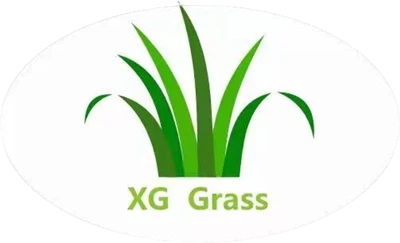The Green Revolution
Aug 28, 2025
1. Technological Innovation: Beyond "Green Plastic" The days of stiff, abrasive, and obviously fake grass are long gone. The focus today is on hyper-realism and performance. Advanced Yarn Technology: The development of hybrid yarns, such as a combination of polyethylene and polypropylene, creates blades that look lush and feel soft underfoot. Many products now feature a mix of blade shapes, colors, and heights (e.g., brown thatch fibers woven into the green) to mimic the natural variation and texture of real grass. Cooler Surfaces: A major historical drawback of synthetic turf was its tendency to absorb and radiate heat. Innovations in yarn composition and the use of special pigments that reflect infrared light are leading to "cool grass" products, making surfaces more comfortable for pets and children on hot days. Enhanced Drainage: Modern backing systems are engineered for superior drainage, capable of handling immense volumes of water per hour. This prevents flooding and ensures the surface is usable shortly after heavy rain, a critical feature for sports fields and high-traffic areas. 2. The Sustainability Drive: Circular Economy Takes Root Sustainability is now a central pillar of the industry, addressing both production and end-of-life concerns. Recycled Content: Leading manufacturers are increasingly using post-consumer recycled materials, such as plastic bottles, to produce the yarn for new grass fields. Full-Circle Recycling: The industry is moving towards a circular model. End-of-life turf is no longer seen as waste but as a resource. Specialized recycling programs are being established to collect old fields, separate the components (yarn, backing, infill), and recycle them into new products. This significantly reduces the environmental footprint. Bio-Based Materials: Research into alternatives to petroleum-based plastics is ongoing. Some companies are exploring infills made from organic materials like cork or coconut fibers, and even developing bio-based plastic yarns. 3. Diversification of Applications While sports remain a core market, the largest growth is coming from new sectors. Residential Landscaping: Homeowners in drought-prone regions are turning to artificial grass to conserve water and reduce maintenance costs. It's also popular in urban settings where green space is limited, such as on balconies, rooftops, and courtyards. Pet-Friendly Solutions: A huge market segment has emerged dedicated to pet owners. These products are designed with superior drainage for cleaning, are durable enough to withstand digging and running, and are often treated with antimicrobial agents. Commercial and Public Spaces: Businesses use synthetic turf to create attractive, low-maintenance outdoor areas for employees and customers. Cities are installing it in playgrounds, public plazas, and roadside medians to create consistently green and mud-free environments. 4. The Infill Evolution Infill, the material brushed into the grass to support the blades, is a major area of innovation and debate. Moving Beyond Crumb Rubber: While traditional crumb rubber infill (made from recycled tires) remains common due to its cost-effectiveness and performance, concerns over potential health and environmental impacts have spurred alternatives. Rise of Organic and Engineered Options: Options like silica sand, coated sand, thermoplastic elastomers (TPE), and organic materials (cork, coconut husk) are gaining traction. These alternatives often address specific concerns about heat, odor, and environmental leaching. 5. Challenges and Regulatory Scrutiny The industry's growth is not without its challenges. PFAS Concerns: A significant and pressing issue is the potential presence of per- and polyfluoroalkyl substances (PFAS), "forever chemicals," in some artificial turf products. Used for their stain- and water-resistant properties, PFAS are under intense regulatory and public scrutiny due to their persistence in the environment and potential health risks. The industry is actively seeking compliant, non-PFAS solutions. Microplastic Shedding: As a plastic product, artificial grass can shed microplastics into the environment. This is leading to discussions about containment systems, filtration, and further material innovation to mitigate this issue. Looking Ahead The artificial grass industry is maturing, moving beyond mere imitation to become a high-tech, sustainable, and multi-functional surfacing solution. The future will be shaped by continued material science breakthroughs, a deepened commitment to circularity, and responsive adaptation to environmental and regulatory challenges. The goal is clear: to deliver the beauty and utility of a perfect lawn with a conscience, for every application.








